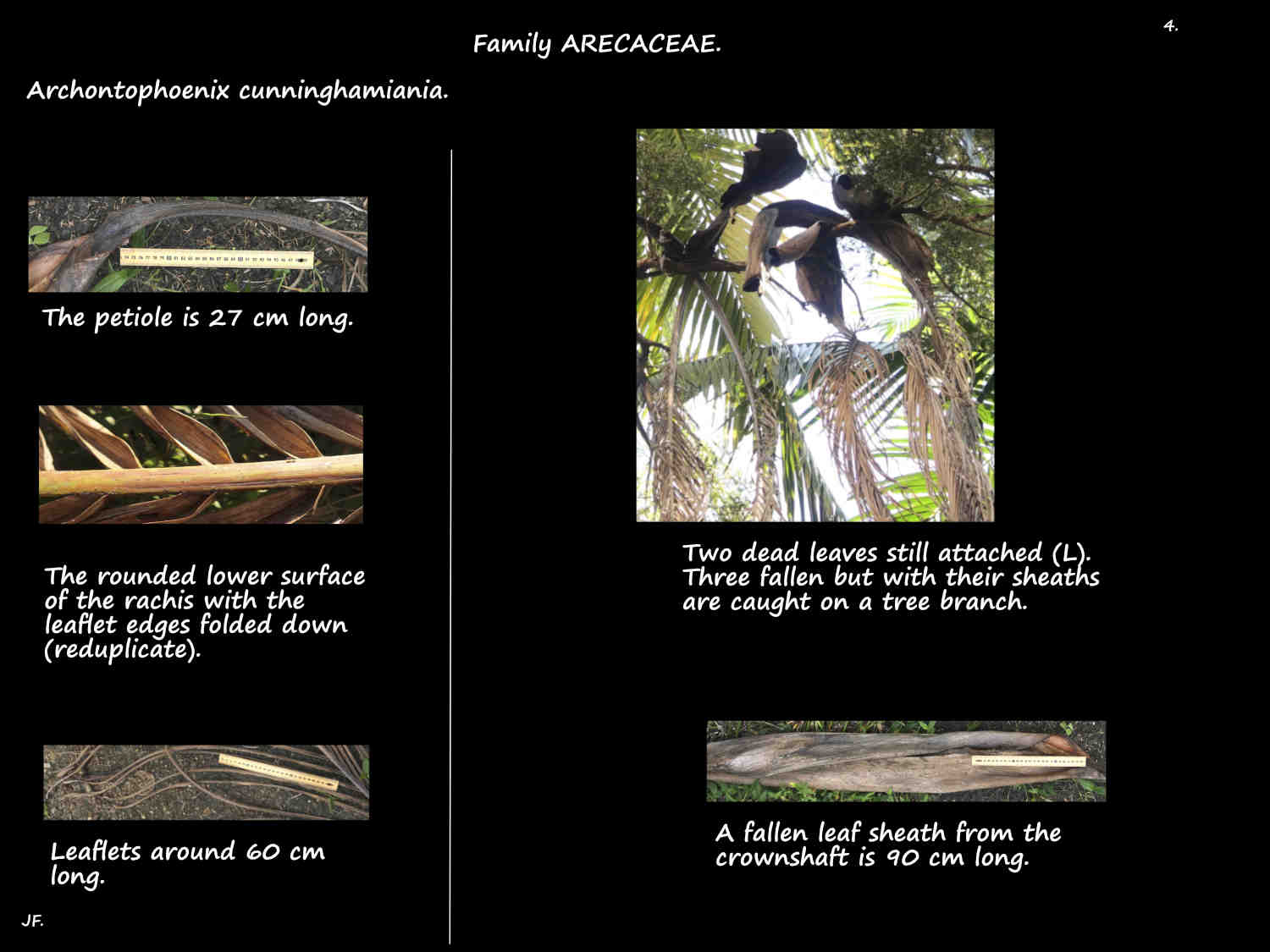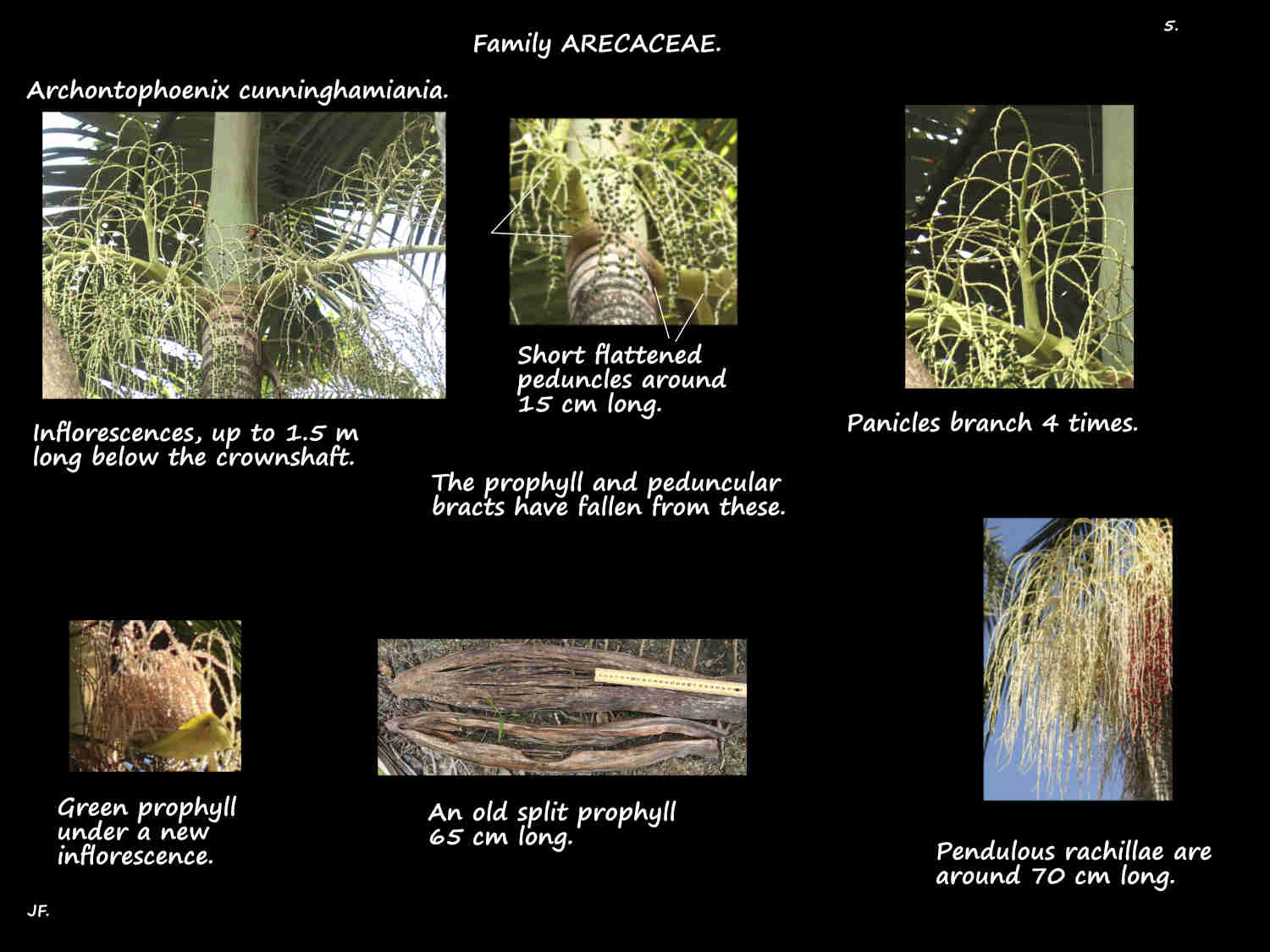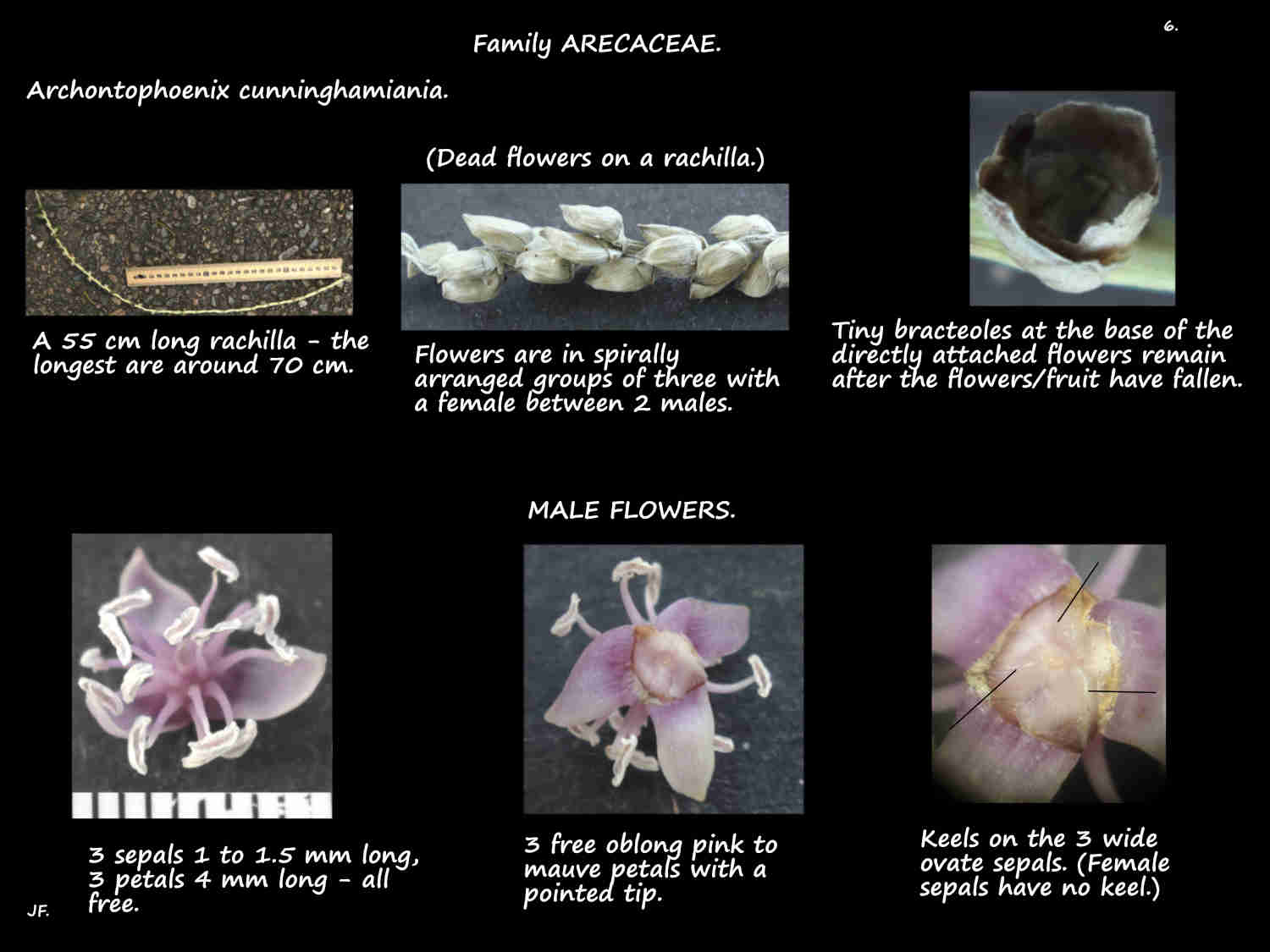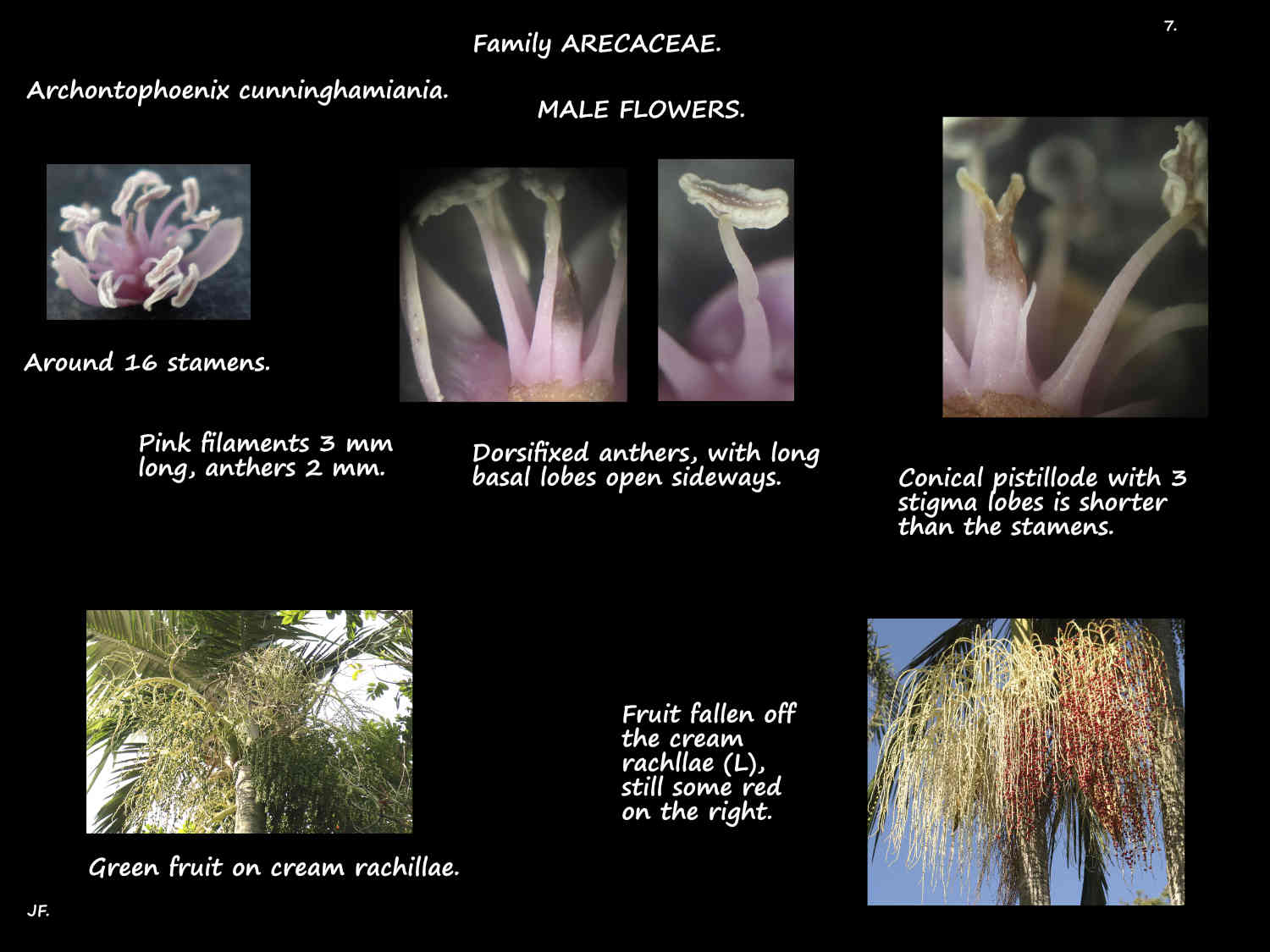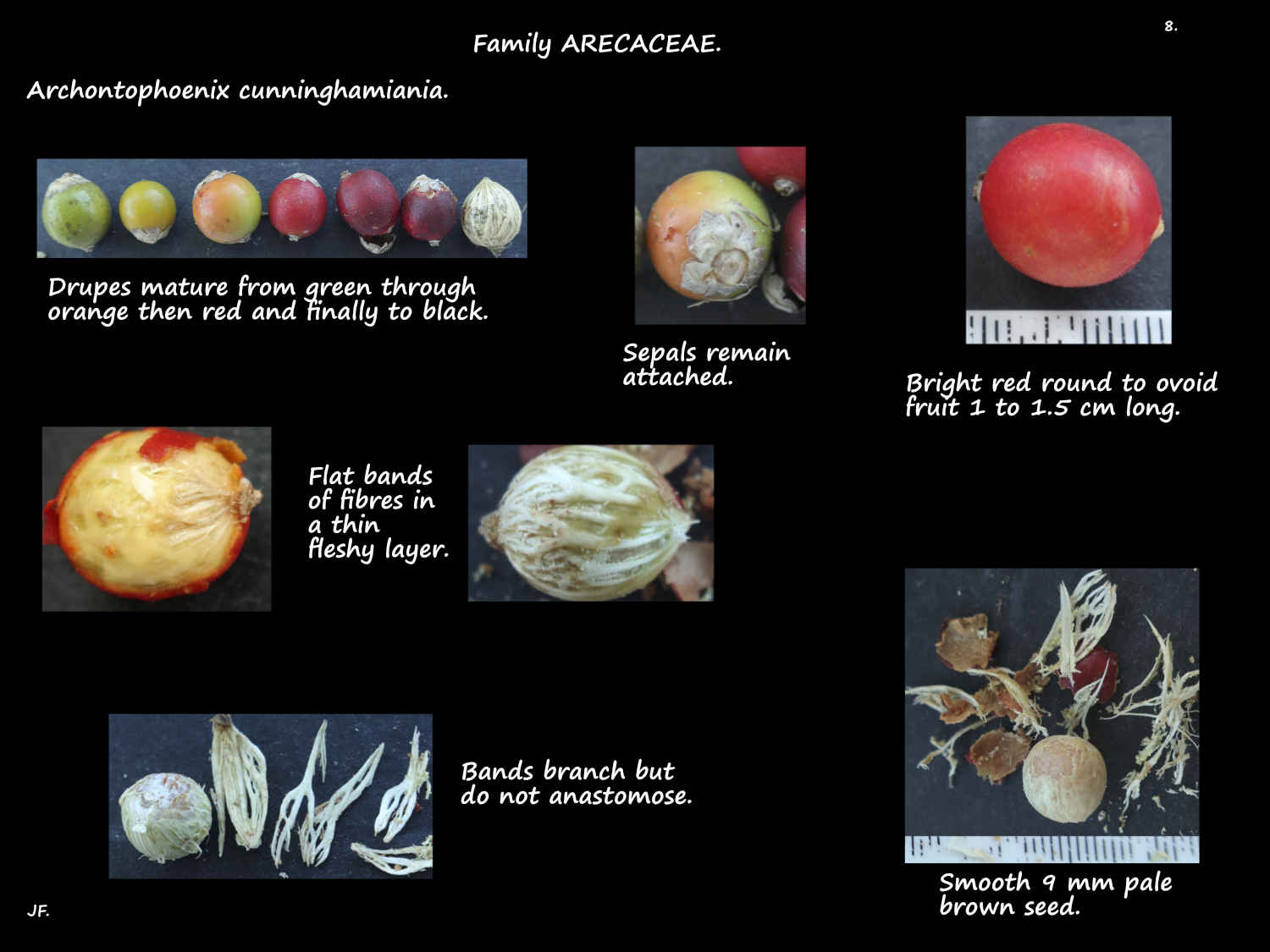The Bangalow Palm is in Family Arecaceae > Subtribe Archontophoenicinae.
Their native range includes the coastal areas of S. E. Queensland.
They were initially known as Ptychosperma cunninghamianum.
The typically solitary palms can grow to 10 or 25 m high.
The slender pale grey to grey-brown trunk is 20 to 25 cm across.
It is often slightly wider at the base and “stair-step” ring scars are obvious.
Old palms, with smoother trunks may develop long vertical fissures.
Described as solitary, in nature they can from extensive dense colonies.
In some countries they are a declared weed or invasive species.
The 8 to 12 leaves in the crown are around 3 to 4 m long.
The arching pinnate fronds are on a pale green petiole 30 to 40 cm long.
There are rust coloured scales on the rounded lower surface of the petiole.
Sheaths from the petiole bases extend down the trunk forming the crownshaft.
The smooth crownshaft, 1 to nearly 1.5 m long is variable in colour.
It can be green, dark green or yellow-green with a brown or purple colouration.
The base of the leaf midrib (rachis) is grooved above and rounded underneath like the petiole.
Further down the upper surface is flat with grooves along the sides.
It has very small brown spots and long dark scales (rameta) underneath.
The rameta are attached by a stalk at the middle or one end.
Along each side of the midrib are up to 50 pairs of narrow leaflets.
Those in the middle of the rachis can be over 50 cm long.
Closely spaced they have a pointed tip and lie in one plane.
From about the middle the midrib twists sideways for up to 90 degrees.
This means the base may have horizontal leaflets and the tip vertical ones.
Leaflets are equally green on both surfaces.
Spots and scales like those on the rachis extend along the leaflet midribs.
The tips often droop and may be frayed by strong winds.
Inflorescences up to 1.5 m long grow from the base of the crownshaft.
They have a pale yellow-green peduncle around 15 cm long.
New inflorescences are protected by a prophyll and one peduncular bract.
The dark green tubular outer prophyll, around 50 cm long has 2 keels.
Slightly longer, the thin fibrous peduncular bract has no keels.
Both bracts fall.
Inflorescences are a panicle that branches 3 to 4 times.
Pendulous branches (rachillae), around 70 cm long have a small bract at the base.
The rachis and rachillae are cream then greenish and eventually mauve.
Along the rachillae are spirally arranged groups of 3 flowers.
Groups have a central female with a male on each side.
The directly attached flowers have small bracteoles at the base.
Male flowers have three free overlapping 1.5 mm long sepals with a keel.
The 3 free petals, around 4 mm long are pink to lilac.
The short purple filaments of the 9 to 18 stamens bend back.
Dorsifixed anthers, with long basal lobes open sideways.
The pistillode is shorter than the stamens.
Female flowers have 3 free overlapping sepals and 3 free petals.
The pink to mauve petals are up to 5 mm long.
The ovary, with 1 ovule has no obvious style and a 3-lobed stigma.
The small staminodes are on one side of the ovary.
The round to ovoid fruit, 1 to 1.5 cm long mature from green to pink then red.
They have a waxy coating and the stigma and calyx remain attached.
Fruit are a drupe with a single 8 or 9 mm seed in a hard coating.
The thin fleshy layer has flat branching bands of longitudinal fibres.
The similar Archontophoenix alexandrae is taller, has leaflets with a paler lower surface and greenish to white flowers.
J.F.




